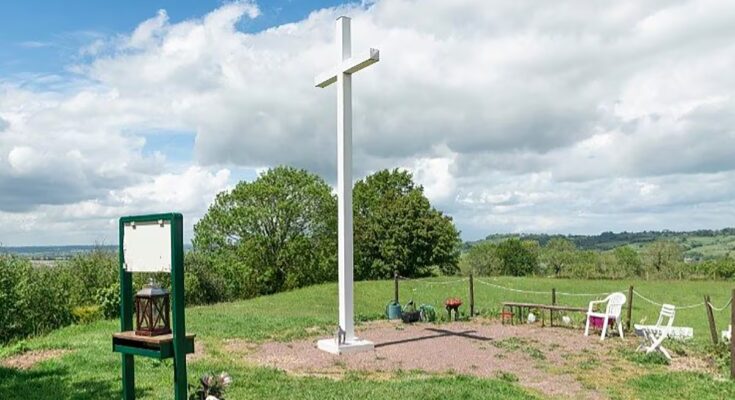The Vatican has officially declared that the alleged apparitions of Jesus in Dozulé, a town in northern France, in the Normandy region, “are not of supernatural origin”, which means that for the Church they lack a divine foundation and cannot be considered authentic manifestations of God.
The Dicastery for the Doctrine of the Faith, the body of the Holy See that deals with the orthodoxy of the Catholic faith, has issued an opinion, officially approved by Pope Leo.
This decision by the Holy See closes decades of controversy surrounding the alleged visionary Madeleine Aumont, who in the 1970s claimed that Jesus had appeared to her 49 times on a hill near Dozulé and had asked that an enormous cross be built on the site which would guarantee the remission of sins and salvation to those who approached it.
Aumont — who died in 2016 — was a mother and parishioner of the local parish of this town belonging to the diocese of Bayeux-Lisieux, and between 1972 and 1978 she declared that Jesus had asked her to erect there the so-called Glorious Cross of Dozulé, which was to be completely illuminated, have a height of 738 meters and an arm of 123 meters, and be visible from very far away “as a sign of redemption”. cross was never erected.
As the Vatican media underline, already in 1985 the then diocesan bishop Jean-Marie-Clément Badré ruled out declaring the alleged apparitions authentic. “The action and agitation, the raising of funds by people acting on their own responsibility, without a mandate, without any respect for the authority of the bishop, the fanatical propaganda in favor of the ‘message’, the condemnation without appeal of those who do not adhere to it, lead me to consider, in good conscience, that, beyond all this excitement, I cannot discern the signs that would authorize me to declare the ‘apparitions’ of which they speak authentic,” he then observed. But until now the case had remained open, without official confirmation or denial.
The current bishop Jacques Habert, who studied the case from a theological and doctrinal point of view, had proposed to the dicastery for the Doctrine of the Faith that a declaration of non-supernaturalitythat is, a declaration that the alleged apparitions have no supernatural origin, to close the question once and for all.
The apocalyptic tone of Dozulé’s alleged messages and the bizarre request for a giant cross were the two points that aroused the most distrust in the Holy See, which normally appears extremely cautious in matters related to apparitions. The Catholic Church has recognized very few apparitions as authentic throughout history – such as those at Lourdes or Fatima – among the thousands of alleged revelations reported.
“The Cross does not need 738 meters of steel or concrete to be recognized,” the Vatican ministry said. And he underlined: “The Church encourages expressions of faith that lead to conversion and charity, but warns against any form of ‘sacralization of symbols’ that leads to considering a material object as an absolute guarantee of salvation.”
The Holy See also believes that the messages supposedly left by Jesus in Dozulé saying that “all those who have come to repent at the foot of the Glorious Cross will be saved”, that “the Glorious Cross will forgive all sins” and that all those who “come in faith to repent will be saved in this life and for eternity” are “incompatible with the Catholic doctrine of salvation, grace and the sacraments”.



